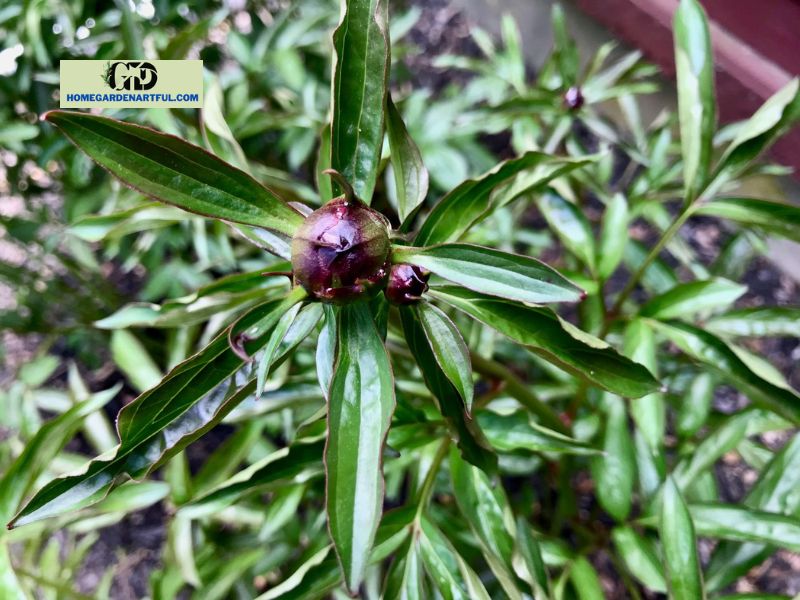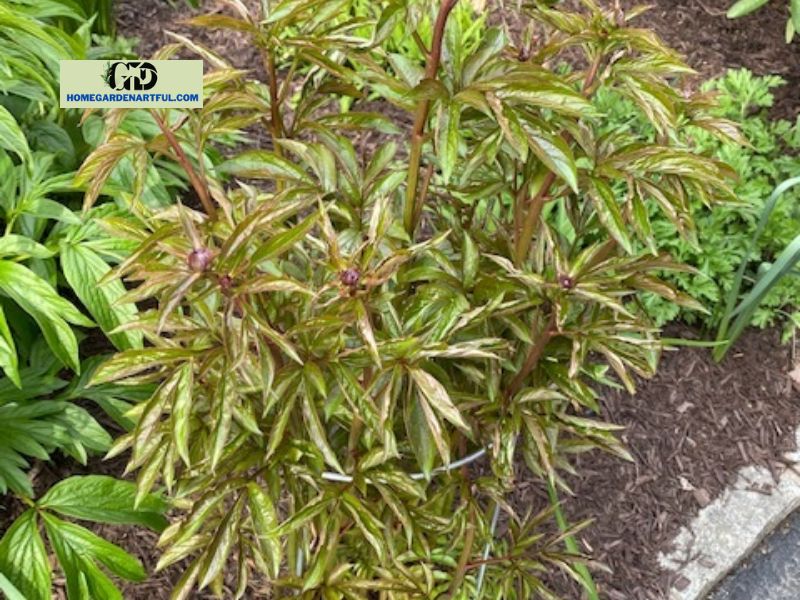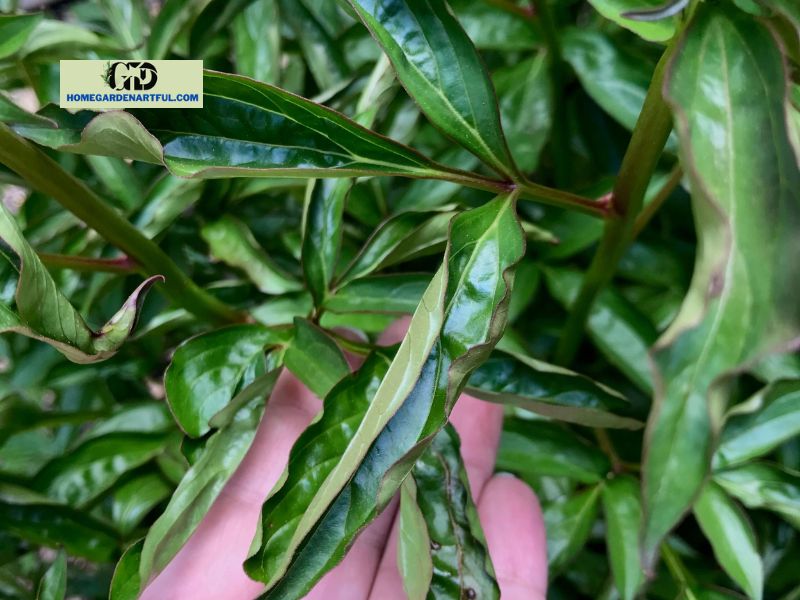Understanding the root cause of curled Peony Leaves might help gardeners take proactive measures to avoid it in their gardens. Let’s look at what causes curled peony leaves and how to avoid them.
The things featured are accompanied by affiliate links, which means that if a purchase is made through my links, I will receive a small compensation. This has no effect on the consumer’s cost. I use this method of linking to products at all times, and it has no influence on the products I review or suggest. Discover at homegardenartful.com!
What Causes Curling Peony Leaves and How to Avoid Them

Temperature Variations
Peonies (Paeonia spp.) have a delicate elegance that entices gardeners everywhere, but weather swings can be their undoing. When temperatures change too suddenly and unpredictably, the leaves curl, especially when peony plants emerge from dormancy and prepare for the growing season.
Peonies are extremely sensitive to high temperatures, which can stunt their growth and cause the plant’s leaves to coil up in an attempt to protect themselves from the heat. This is not only unsightly, but it also prevents crucial sunlight from reaching the young peony.
To avoid this form of curling, protect your plants from excessive temperatures by covering them with blankets or burlap as needed and keeping them away from locations exposed to direct sunshine on hot days. It is critical to provide appropriate protection for your peony during hot weather.
With the right temperature and other parameters, you, too, may have gorgeous peony flowers in your own yard.
Damage Caused by Late Frost

Late frost damage to peony leaves may also be a factor. When temperatures drop after your peonies have begun to develop leaves and buds, late frost damage can occur.
Late frosts can slow development and injure cells, affecting the peony’s capacity to absorb nutrients efficiently. In an effort to defend itself from the cold, fragile new growth may curl and pucker.
Late frosts are usually more harmful than early frosts since buds and young shoots have frequently emerged from dormancy by then, rendering them especially prone to damage such as bud-blast.
If you anticipate frost before your plants have had a chance to bloom in late spring/early summer, cover them with fabric or plastic to protect them from frost damage. Once the frost threat has passed, just remove the protective covering and allow Nature to take its course!
Thus, if you notice curled-up leaves on your peonies, late frost damage may be to blame, and it’s preferable to avoid it if possible.
Water is either too little or too much

It’s not easy to keep a peony flower healthy and gorgeous, but it doesn’t have to be difficult! The most important thing is to keep your soil continuously moist because the plant’s shallow root system can suffer from dry dirt.
Watering should be done with caution because too much water can cause root rot, which leads to leaf curl. However, letting it dry out for too long stresses the peony bush, causing it to curl as a defense against an adverse environment.
During a drought, water your peonies 1-2 times each week to guarantee they survive. This will keep the soil at an optimal moisture level. If rainfall is adequate, there is no need for further watering; let nature take care of it!
Check with your finger or an additional gadget, such as a moisture meter, to see whether it needs more moisture- if one inch below the surface level isn’t feeling wet, it’s time for some hydration love!
Peonies require a healthy mix of water to survive, but too much or too little can lead to major problems. As a result, delivering the proper amount of water is essential for keeping your plants happy and growing.
Pest Infestation
Pest infestations can cause peony leaves to become damaged quickly. The damage may be both depressing and devastating for any dedicated gardener, ranging from tightly curled, discolored leaves to big black or brown blotches on their surface.
When aphids, mealybugs, spider mites, thrips, and scale insects eat on the underside of delicate peony foliage or dig into the stems, your plant is under attack. These insects feed on the plant’s sap and extract its nutrients.
Frequently Asked Questions About Peony Leaf Curling
Is a curled peony a cause for concern?
It is determined by the cause. If the leaves are curled owing to a pest infestation, it is critical that you address the issue as quickly as possible.
If the curling is caused by a nutrient deficiency or environmental factors, it may not require any specific treatment other than plenty of sun and water.
Can curled peony leaves be uncurled?
Yes, with proper care and attention, curled leaves will usually uncurl.
Should you prune curled peony leaves?
No, cutting curled leaves will not benefit the plant and may worsen the condition and stress it out. The best line of action is to discover the root problem and then treat it.
How to Restore Peony Leaves Curling
Gardening with Peonies can be a joyful experience, but it is not always possible to get the desired results. Curly leaves are an unattractive appearance that frustrates gardeners; yet, there is hope!
We have all the tools we require to maintain curly-leafed problems away from our precious peony gardens by taking practical measures such as preventing frost damage with protective covers or fabrics, eliminating potential pest infestations quickly, regulating water schedules, and choosing sun exposure levels wisely!


